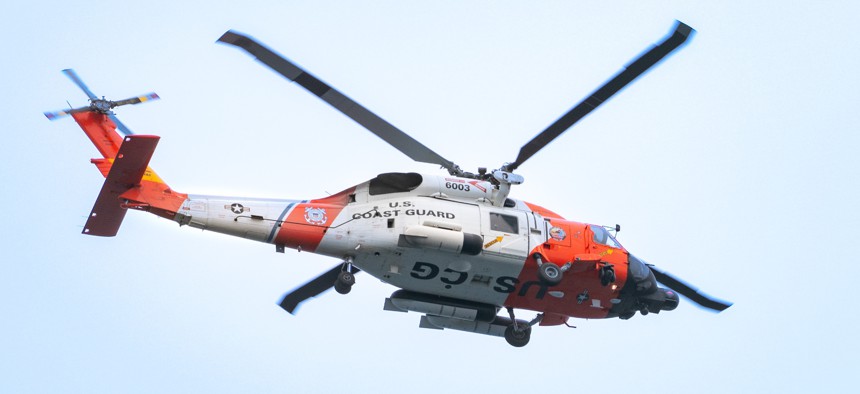
Despite retention and recruitment challenges for its aviation workforce, the Coast Guard hasn't completed a full assessment of its personnel needs to inform its future aircraft fleet strategy. AaronP/Bauer-Griffin / GETTY IMAGES
Coast Guard hasn’t assessed how many future aviation personnel it needs, report says
The service is in the midst of modernizing and consolidating its aircraft fleet, but it’s also facing workforce challenges that could alter how many vehicles the Coast Guard ultimately needs.
The Coast Guard is currently operating a series of programs to consolidate and modernize its aircraft fleet while improving its readiness in the future, but a new report has found the service is also battling aviation workforce challenges that may impact the strategy.
The Government Accountability Office report, released Tuesday, found that while the service plans to trim its helicopter fleet to 127 aircraft, down from 146, it hasn’t assessed its personnel needs amid ongoing aviation staff vacancies.
Coast Guard policy calls for aircraft to be available to conduct missions at least 71 percent of the time, equating to at least one for every three on-base aircraft available to launch while the others may face repair, maintenance or other issues.
But that availability level dropped to a range of 66% to 68.3% between fiscal 2018 and 2022 due to maintenance challenges, leading to some bases prioritizing certain flights based on accessible aircraft and mission. A lack of available parts due to supply chain disruptions and other issues also challenges Coast Guard officials.
The service currently has four acquisition programs underway to pivot the Coast Guard fleet away from short-range helicopters to a fleet comprised of fewer medium-range aircraft to help combat parts shortages.
But GAO officials said that the Coast Guard hasn’t assessed whether its plan will meet mission needs or the necessary workforce levels needed to make it work.
As of July 2023, the service has had 9% of its authorized military aviation workforce positions vacant, with 19% vacancies for rescue swimmers, 12% for pilots and 7% for maintainers—who inspect, maintain and troubleshoot aircraft systems and engines.
The service has been working to address retention issues with updates to the swimmer training curriculum and incentives for swimmers and pilots, but GAO officials said it has not completed the Manpower Requirements Determinations process designed to assess the aviation workforce needs.
“Coast Guard headquarters officials acknowledged the importance of meeting MRD requirements and determining the workforce needs for the aviation workforce, but the Coast Guard has not prioritized their completion,” the report said. “In July 2023, the Coast Guard provided a list of the workforce assessments it plans to start in the next five years. This list included one out of five Coast Guard aircraft types and did not include any of its aviation.”
As a result of growing mission demands, the Coast Guard may not have insight into whether its manpower needs are higher or lower than its authorized levels, further complicating the potential readiness impact of its new aircraft fleet strategy.
Last month, Coast Guard officials completed a workforce assessment for one of its five aircraft types and plan to complete assessments of its 25 air stations in fiscal 2024, but have not, as of August 2023, identified funding sources for completing the MRDs needed.
The report also noted the service doesn’t have complete aircraft readiness data for all air stations and that air stations enter the data inconsistently. The Coast Guard also based its desired future aircraft count on “historical annual flight hours to estimate equivalent flight” without having updated its fleet mix analysis since 2005, GAO officials said, despite increases in mission demands.
The report offered five recommendations, including that the Coast Guard uniformly collect, maintain and evaluate air station readiness data, that it assess the type of helicopters required to meet its mission demands and how many and that it should assess and determine appropriate aviation workforce levels.
The Homeland Security Department, which oversees the Coast Guard, concurred with all five recommendations and outlined the Coast Guard’s steps to address them.







